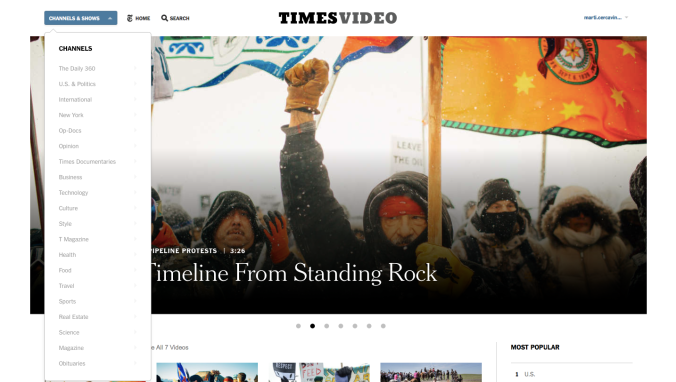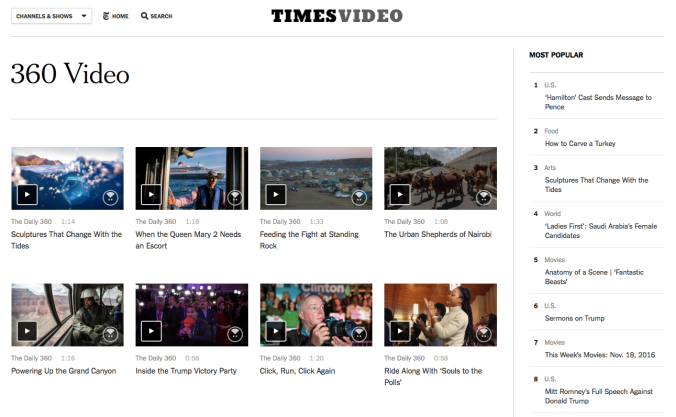The New York Times is a ground-breaking newspaper not only in the United States, but also all over the world. But the word “newspaper” is no longer appropriate to describe the type of journalism that The Times stands for. The journalism shift to digital world has changed the way media organizations produce the content. When newspapers first launched their websites they simply reposted the same stories and formats they were doing in print. However, news outlets online need to craft their stories in an appealing manner for the audience.Viewers in this day and age are fed up of reading. They look for visual and immersive content, video, images and stunning interactive infographics.
Today, The New York Times Company describes himself as “a global media organization dedicated to enhancing society by creating, collecting and distributing high-quality news and information”. Although the company is still preserving its excellence in journalism, The New York Times is focusing more and more on cutting-edge technologies like 360º video and virtual reality. Thus, video storytelling is now a staple.  This is how The Times Video site looks like / The New York Times
This is how The Times Video site looks like / The New York Times
The globally known daily newspaper took a chance on video some years ago, and nowadays video is basic for a news organization with presence on the Internet. While newsroom jobs are going down, investments are shifting to the video team. The New York Times operates in every single platform where people looking for news would like to see videos rather than text: YouTube, social media such as Facebook or Instagram or the smartphone app. Videos used to be the best partners to print stories, but they are not anymore. Now videos are the attention-grabber, while text is second.
The New York Times has two different sites where it updates video. Times Video is where the news outlet places all the footage. In every channel we can find videos related to different topics, such as U.S. & Politics, International, New York or even documentaries. The clips normally range from 1 to 3 minutes, which is a very appropriate time for the web.
But the concept of “video” is currently going one step further, with the advent of 360º video and virtual reality (VR). And The Times is going all in with it. Last November, it unveiled The Daily 360 in a partnership with Samsung, where it puts up 360º videos. But The New York Times actually began its push to VR last year when it rolled out its NYT VR app and gave away a million Google Cardboard goggles to Sunday print subscribers.
This is the first video that The Times posted to The Daily 360
360º videos offer an immersive experience to the viewers. They make them feel they are on location experiencing the event themselves. They can look to any side and see what is going on around them. Using the goggles, the adventure becomes even more exciting and realistic.
Social media is also a very important environment for media, because the number of Internet users looking for news on social networks such as Facebook and Twitter is pumping up. The new York Times Times is taking advantage of the new features that both Facebook and Instagram have incorporated, clearly backing up Facebook Live and Instagram Stories to engage with a wider audience. 360-degree videos are also streamed live from The New York Times Facebook Page. Videos on Facebook posted by media outlets usually include some text that backs up the footage.


